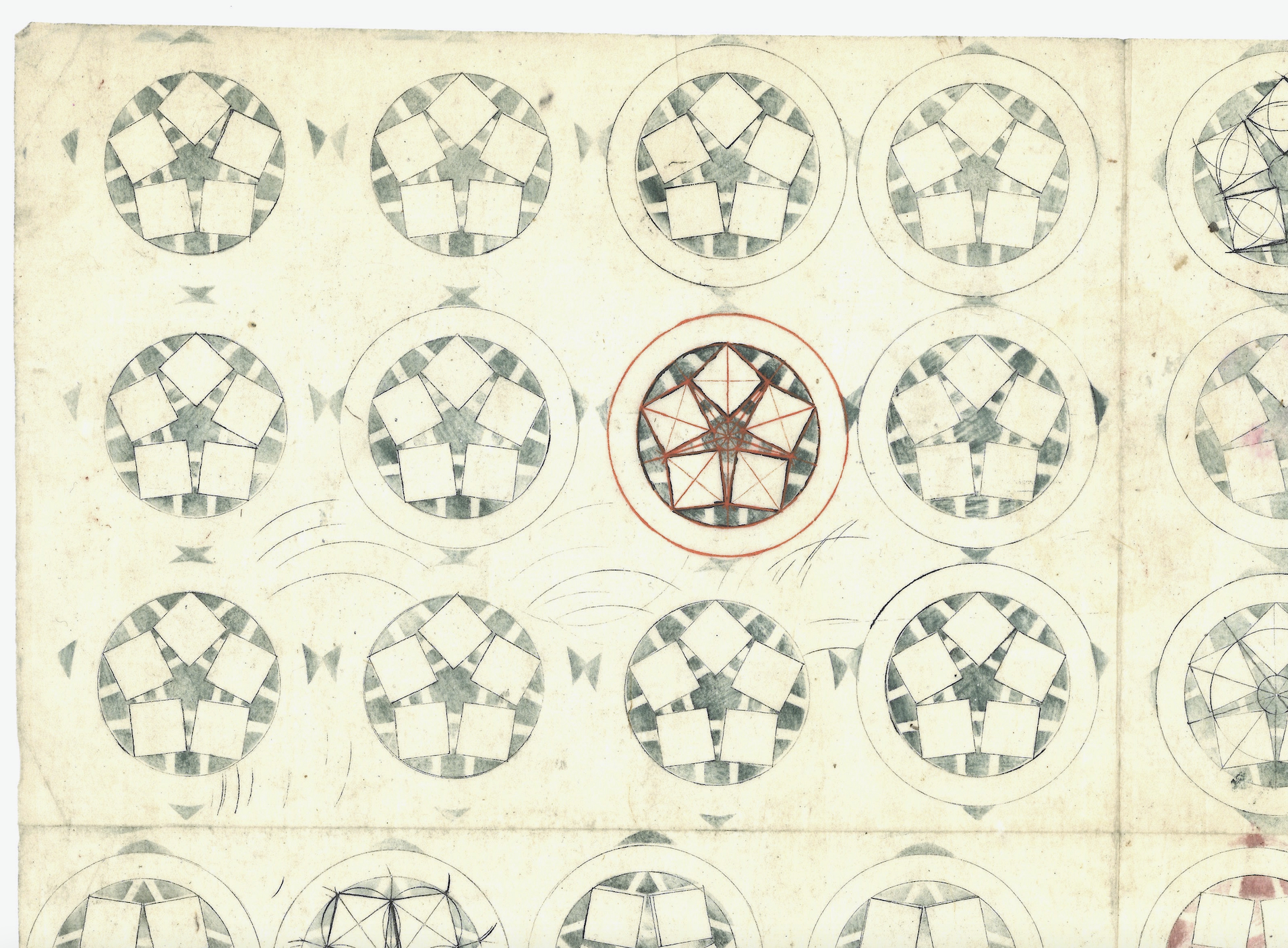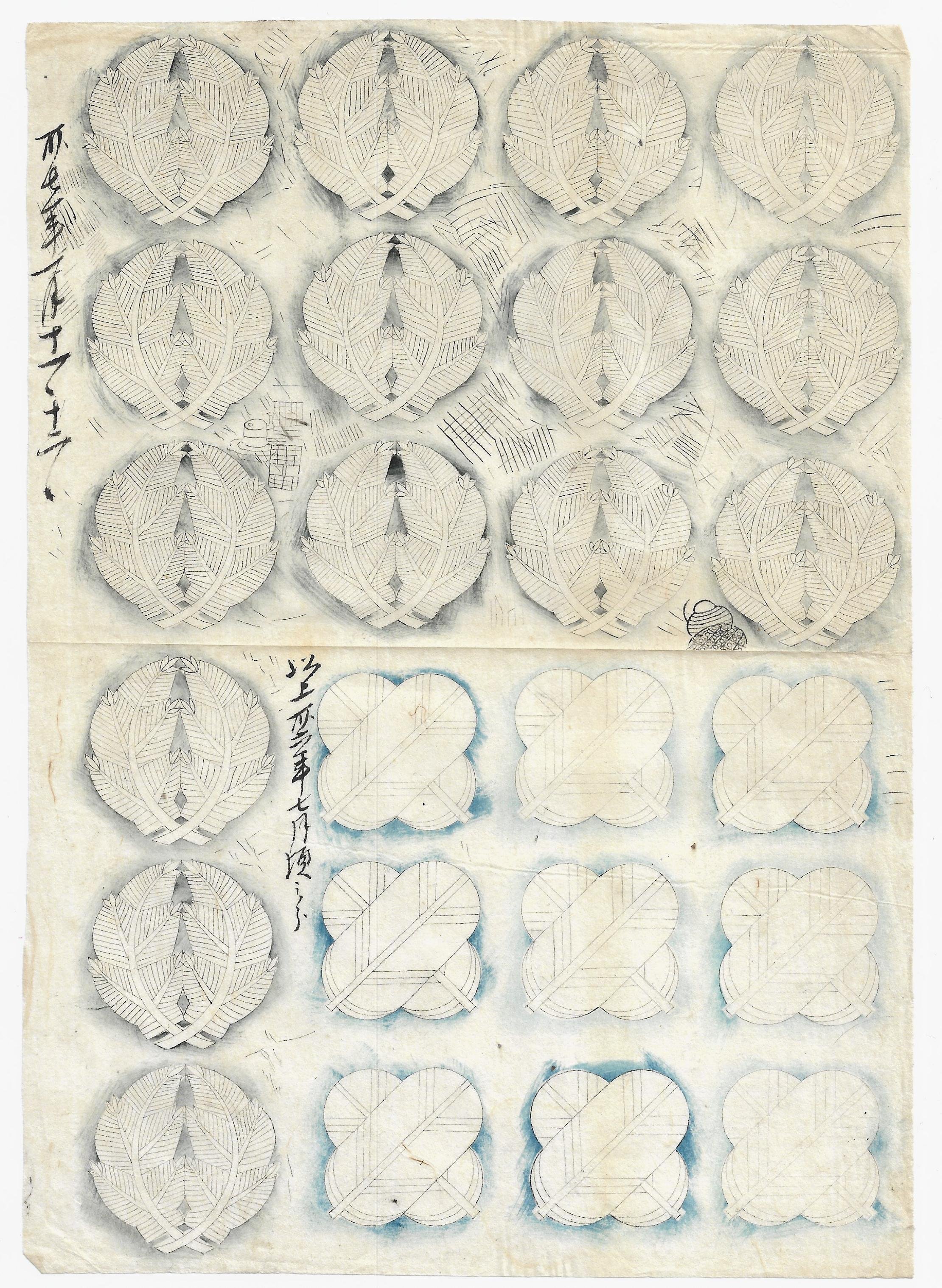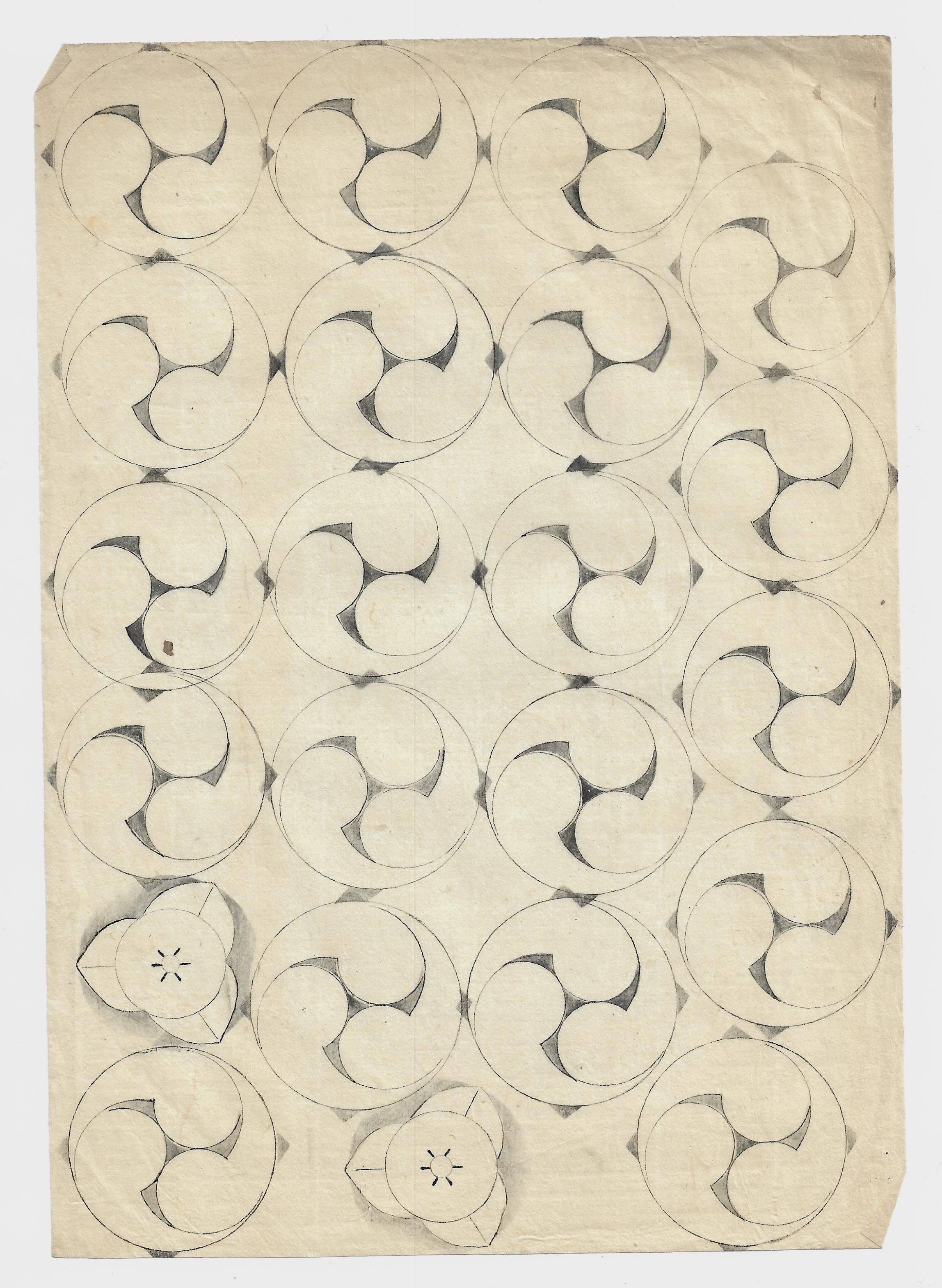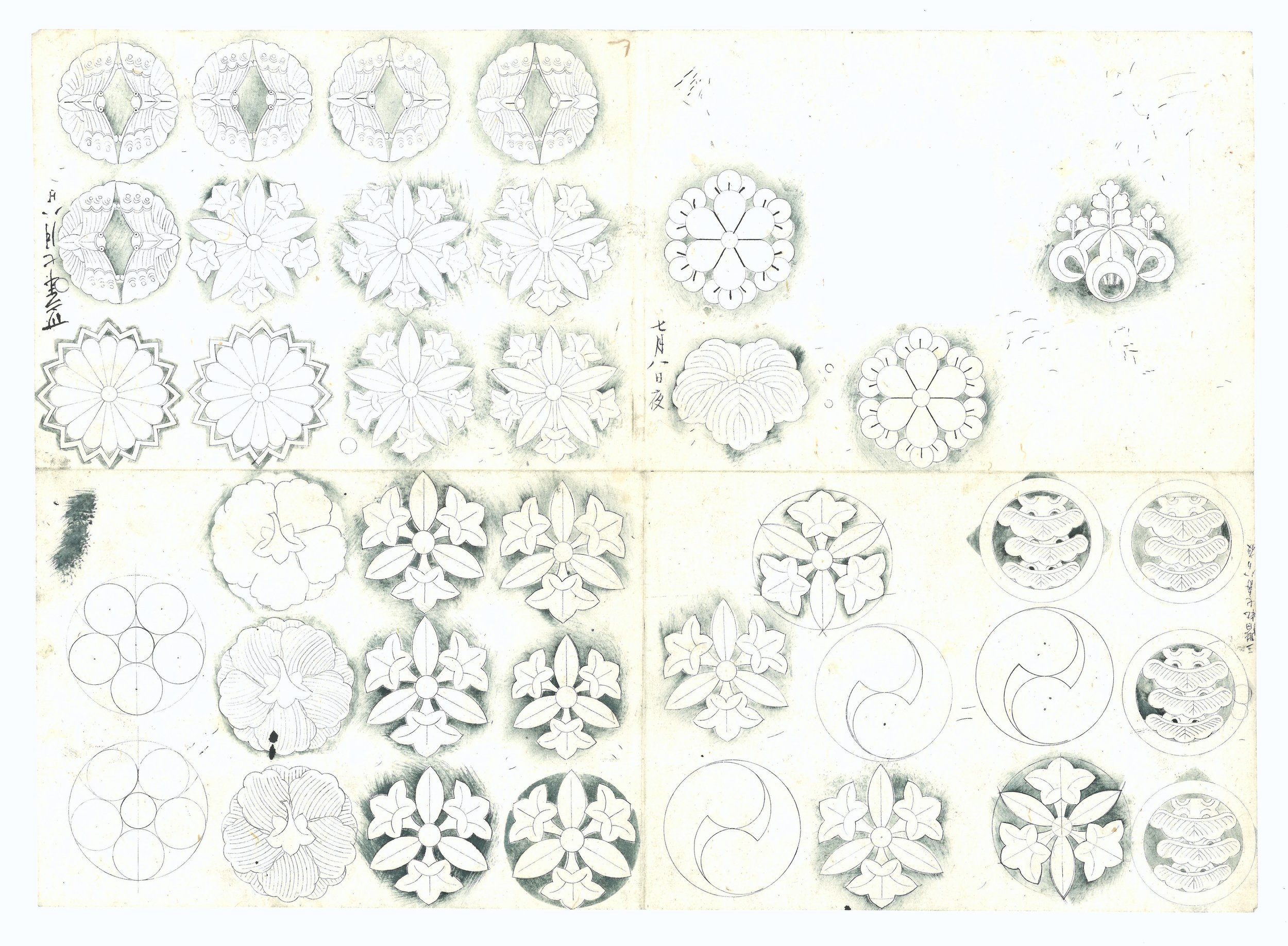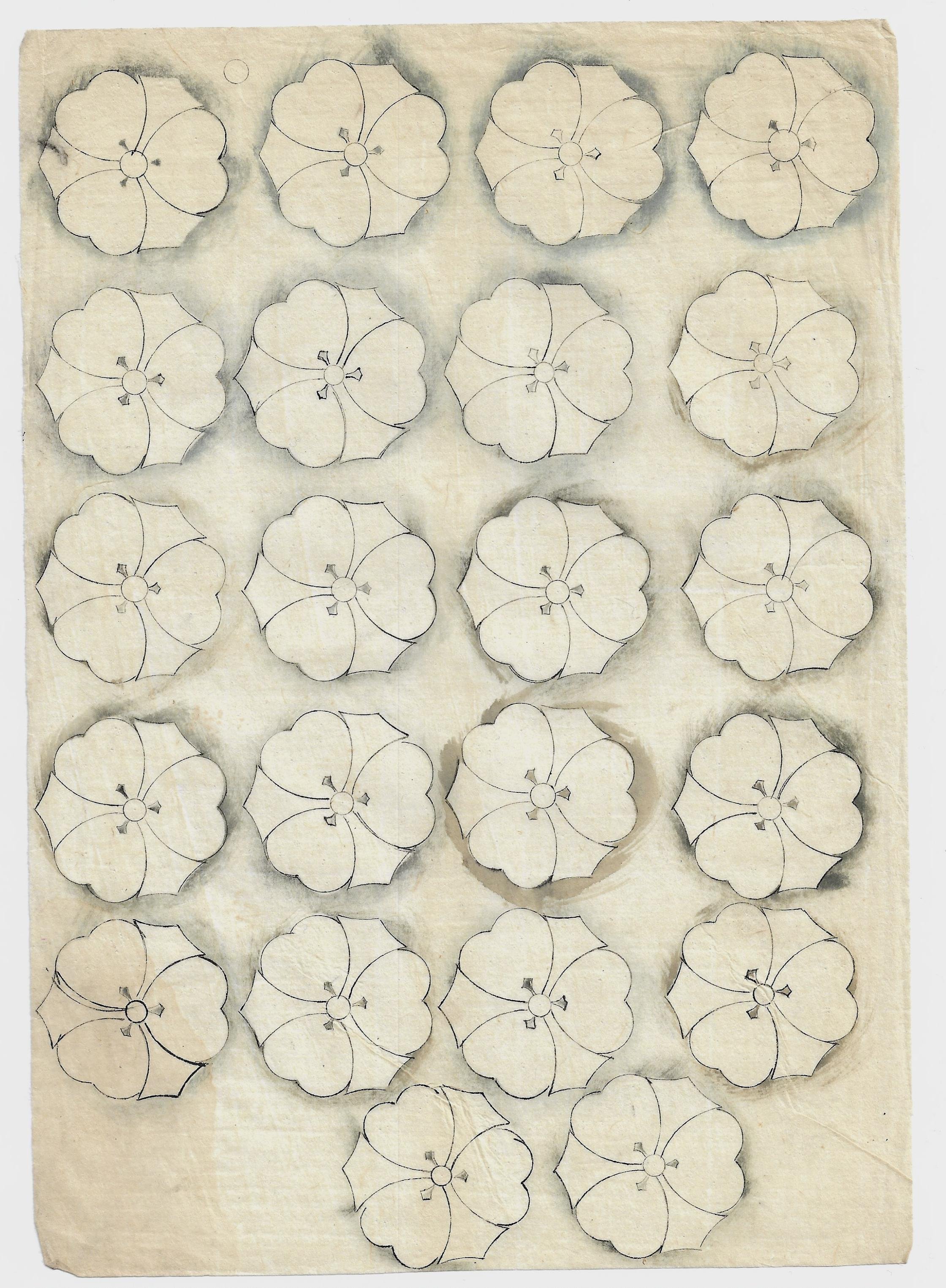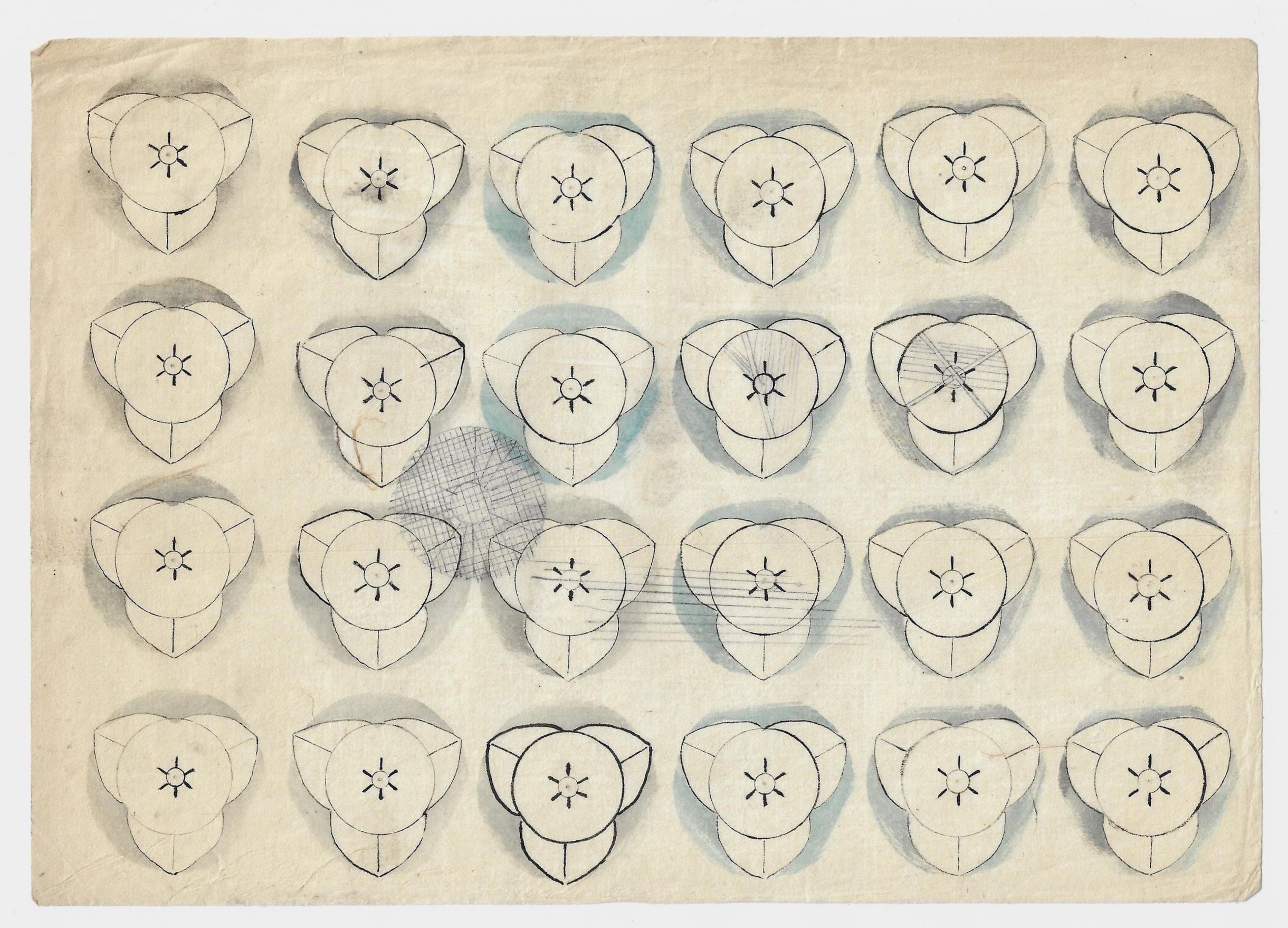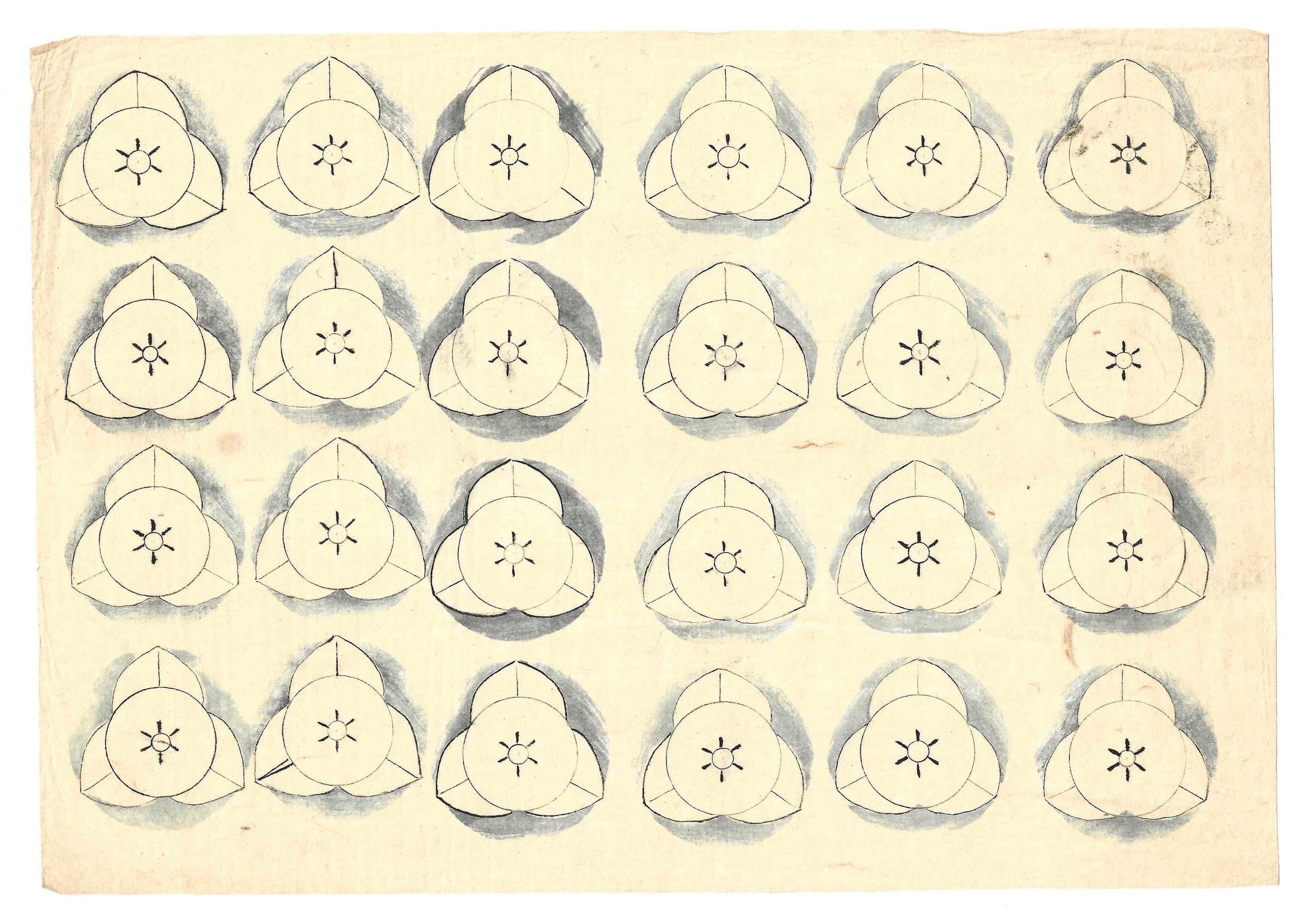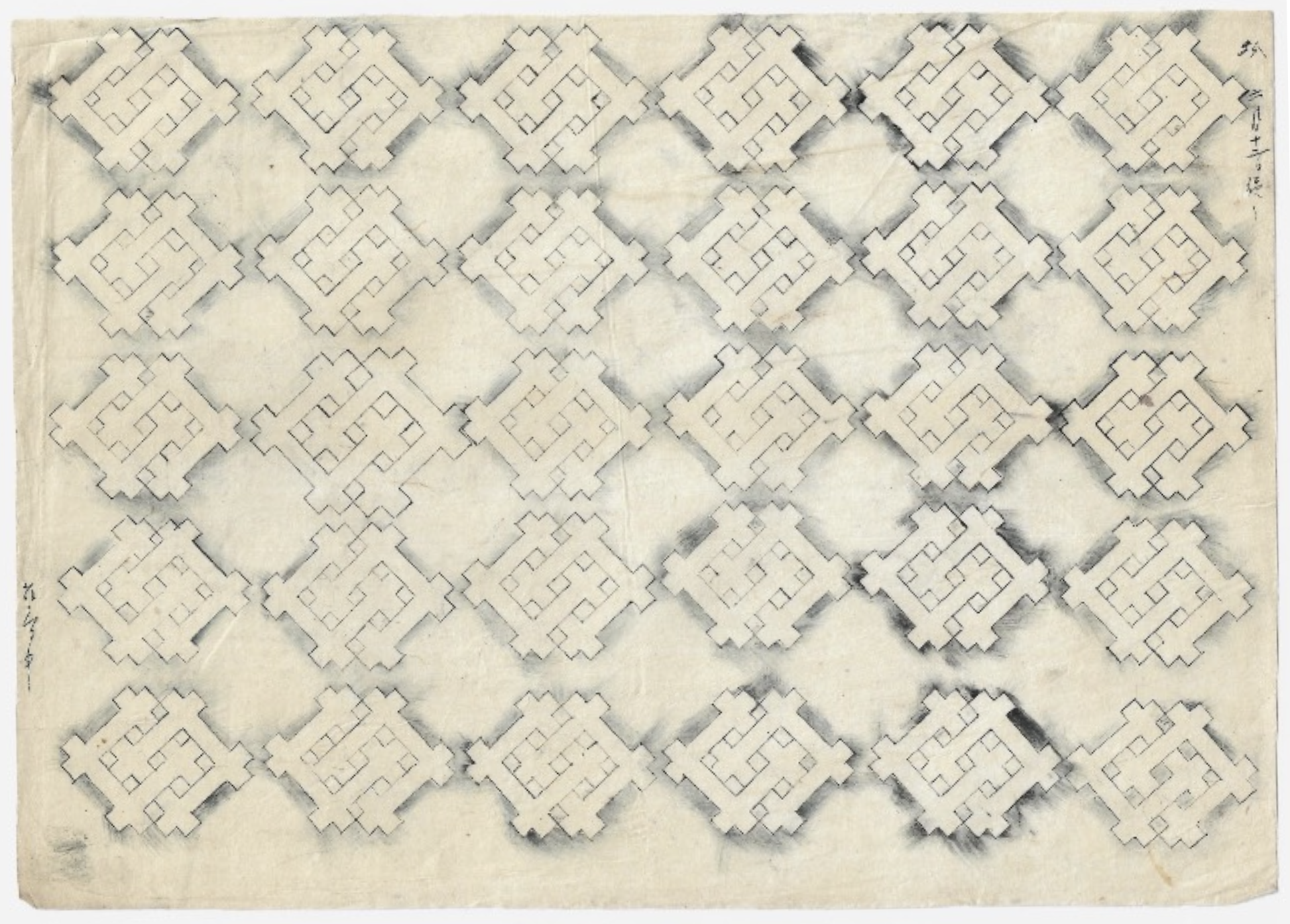Ōtsuki Chōzaburō
Ōtsuki Chōzaburō was an artist and craftsman who worked in Kyoto, Japan during the late 19th/early 20th Century. This collection of Kamon pattern drawings was acquired from a private collection in Kyoto. For availability and pricing please email: info@cpmprogram.com
Pattern drawings of Kamon (family crests):
Kamon originated in the mid-Heian period (900–1000) as a way to identify individuals and families among the nobility. Kamon motifs can be broadly classified into five categories: animals, plants, nature, buildings and vehicles, and tools and patterns, each carrying their own symbolic meanings. In the Kamakura period (1185-1333), Kamon also became an established custom among the samurai class, and this type of heraldry was used on flags, tents, and equipment in battle. Slowly, these symbols of classification became used more widely in Japanese culture, and by the Edo period (1603-1868), Kamon were fully established among the general public.
These works are predominantly from the Meiji period (1868-1912) and depict intricately drawn patterns of Kamon. Some of the drawings are densely populated with the same Kamon iterated many times, while others are more free form, incorporating combinations of different Kamon, color, and marginal text. Nuances in line quality, shading, and peripheral sketches permeate these drawings and invite close inspection. It is likely that Ōtsuki Chōzaburō was employed to create Kamon for clients in Kyoto and these are process drawings that work out those designs. These drawings exist at once as historical artifacts, works of art, and the visual documentation of a master refining his craft.











